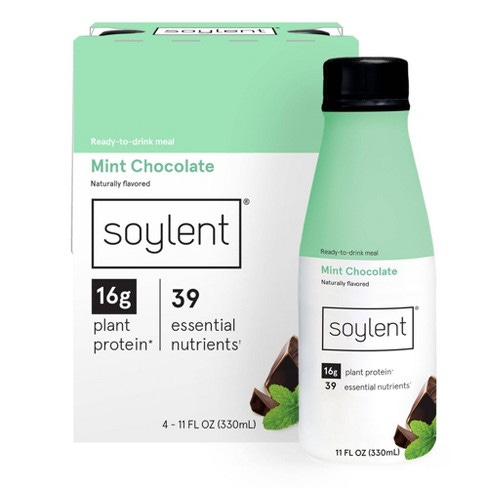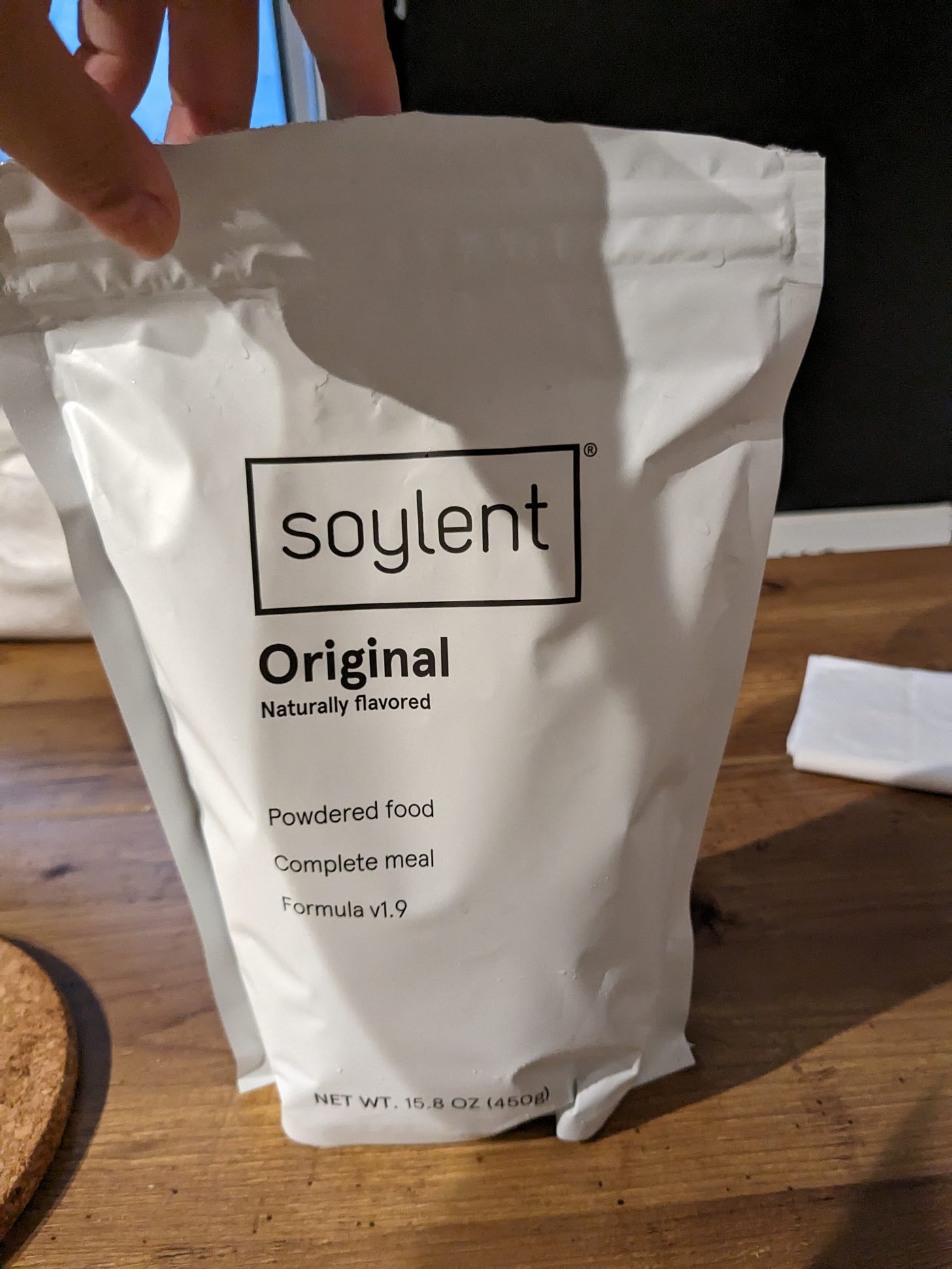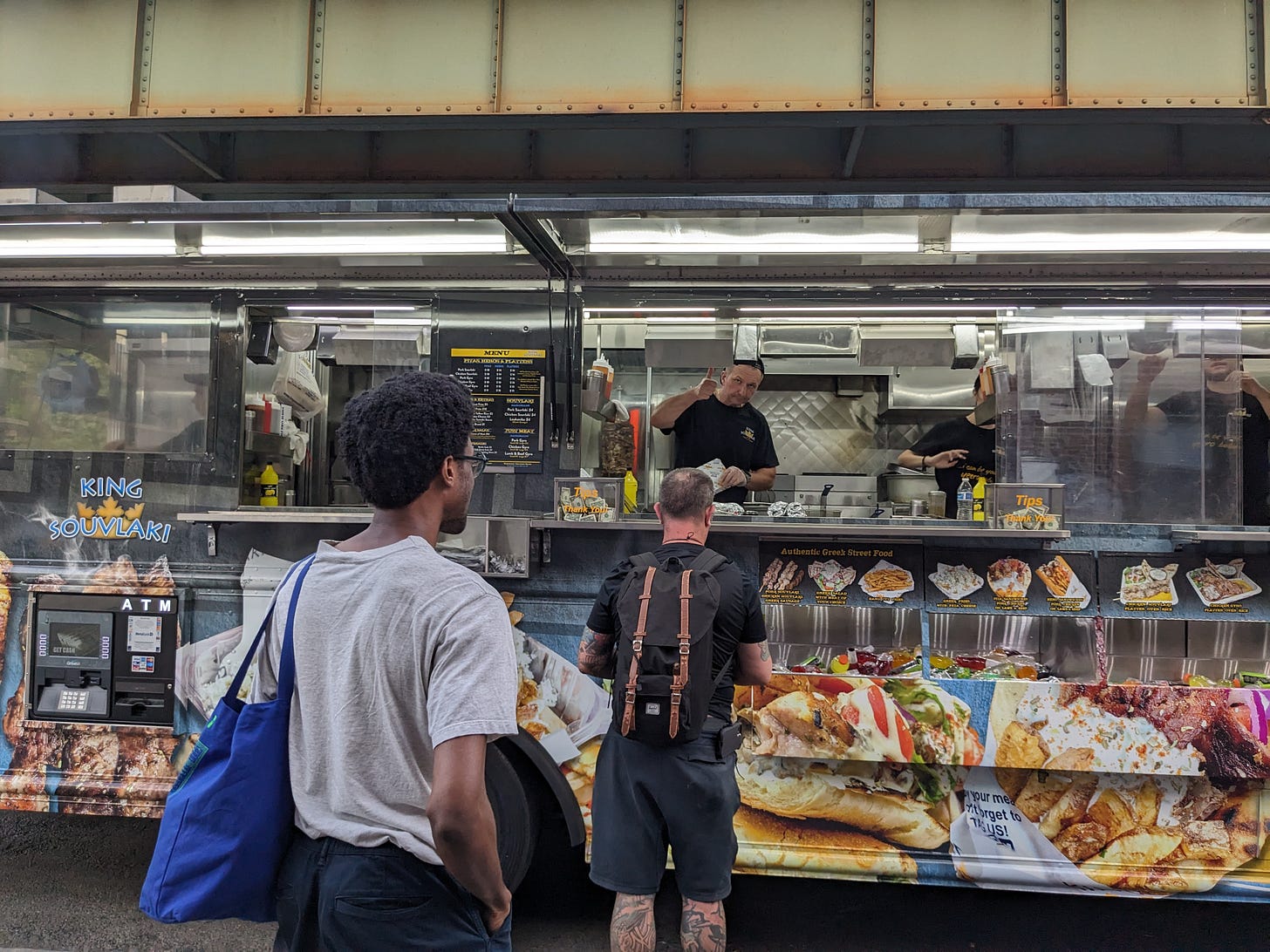We Know What's In Soylent
That's the whole point
Soylent Green (1973) is a movie about the post-apocalyptic world of 2022, in which all humans have been supplied a limited food source, known as “Soylent Green.” But Soylent Green has a dark secret—it’s made of human remains.
The movie hits home because it’s about conspiracy. A slumlord government can devalue its citizens enough that they become nothing but a number of mouths to feed. In turn, their bodies become their food source, and their autocannibalism simultaneously horrifies and sustains them. To the 2023 viewer, Soylent Green looks like the manifestation of an outdated Mathusian ideal, how overpopulation will be the future’s biggest problem.
“Soylent” is also the brand name for a popular food-replacement beverage. According to the drink’s creators, the film and the product are connected. Soylent’s name is an homage to the same 1966 novel that Soylent Green was based on: “Make Room! Make Room!” by Harry Harrison. The novel imagines a future where overpopulation is the main destructive cause on Earth, making a comfortable way of life impossible. The human population in that book? 7 billion. (Today’s global human population is 8.1 billion.)
I have a problem with people who think overpopulation is what’s gonna do us in. High rates of population growth can strain mass production of food and other essentials, but I also think that the solution isn’t to seethe at pictures of crowded groups of hungry people, blaming their low quality of life on their existences. It reeks of eugenics. It reeks of… tech bro.* Tech bros seem to loathe other people, charming inefficiency, and the beautiful mess that is humanity in a way that creeps me out. (They certainly loathe artwork made by humans.) My opinion of the Silicon Valley world is intrinsicly intertwined with my opinion of Soylent, and I don’t think I’m alone.
*Let me be the first to say: Not all tech bros. Some have taken things in a disturbingly opposing direction. Why can’t you people ever do anything normal?
When we think of Soylent, most of us don’t imagine ushering in a new political order in which humans take up less space. We imagine some guy, hunched over his laptop, drinking a bottle of goop that keeps him from having to get up and make himself some cereal. And I say good for him! But I think the Soylent-revulsion that some people experience comes from the absence of something that connects the Soylent-enjoyer to their humanity—having a little time in the day for something yummy.
I don’t understand the justification that Soylent “saves time” between meals. I imagine eliminating prep time for food would let coders stay in their flow-states, and that’s very helpful for them. But so would missing out on a nice conversation with a friend, refusing a hug from your mom, or taking a piss in a catheter instead of a toilet. Every human on this Earth has opinions about food, so opting out seems deliberately alienating. To me, it’s about dignity. What sort of person would prefer a flavorless sludge over a warm, home-cooked meal? We don’t live in the evil version of 2022—so why did we invent its beverage anyway?
A Soylent-Enjoyer’s Perspective
One of my dear friends, web designer and playwright Alex Beige, drinks Soylent almost every day. A 15-minute conversation with them (which you can listen to at the end of this newsletter!) helped me understand what’s so appealing about the stuff.
“Affordability, health reasons, moral reasons, like sustainability, and convenience. Those are the four main reasons [that people drink Soylent],” Alex says. “But then, there’s the actual history and underlying philosophy of Soylent and that’s almost a solely separate thing, stripped from it’s presence in grocery stores. But it’s really, really interesting.”
Alex’s journey with Soylent started when they were trying to quit their Monster energy habit in 2017. When Alex noticed that some Soylent comes with caffiene, they made the switch—the added bonus being it also helped them get nutrition during the day. It wasn’t until this year that Alex finally bought an entire box of plain Soylent powder, eating a scoop for breakfast a day.
I empathize with how knowing what you’re going to eat every day is a deeply comforting feeling. But Alex mentioned an angle that I didn’t expect. “It makes it harder for me to justify not feeding myself,” they said. I had almost forgotten that for some, getting to the table is just… hard.
Soylent was invented in 2011 by, according to Alex, “some tech guy” in San Francisco. That guy ordered raw chemical ingredients for what his research showed him were the bare minimum a human needed to survive. Then he made Soylent in his garage. He was essentially “a ‘biohacker,’ hacking his way into the human body through Soylent.”
Before tech bros could buy Soylent, it was created by other people who wanted to come up with a solution to the inconvenience and confusion around traditional meals. I love cooking, but it’s no joke. In order to get good at it, you do need to have lots of time and money to spend. Cooking skills have also been historically gendered, and in the 1950s, women fought for efficient kitchen systems that would give them the rare privilege of free time. I can see how a person who was never taught how to cook skillfully would rather mix some chemicals than learn to julienne bell peppers.
Soylent was also created during a time where there was backpedaling on the food pyramid, a nutrition education staple for years. When the creator of Soylent posted about his experience drinking it for a month, others followed suit, creating it for their specific health needs, allergies, and goals. The early 2010s saw the boom of individualistic self care culture, and were rife with obsessive, cultish divisions on how to feed oneself in a healthy way. Soylent, before it was ever marketed as one of those solutions, was a community effort.
Nutrient-dense foods are hard to come by for many in the United States, often disproportionately so for Black and Brown people. That fact is a result of systemic issues baked within our food systems. I’m skeptical that the free market can solve them, but I think it’s important context when we consider the ethical reasoning behind Soylent. The creators of Soylent have an interesting solution for the problem of poor resource allocation, and that is to accept that there must be a more efficient and accessible way to feed those affected by a growing world. And the agriculture industry will be very hard to change.
All this being said, I tried plain Soylent. I say this with all the love in my heart for people who drink it: it was foul. If you can manage this, I’m honestly jealous of you. I felt like a little Dutch prince, being too fickle to eat gruel without a little quail’s egg in it. I’m so grateful for the joy I derive from food, but now I know it’s something of a requirement for me to eat.
So, take your Soylent with a grain of salt, but don’t knock it ‘til you’ve tried it. And I have to disclose that I’ve tried a little bit of a convenience-hack myself: Factor meals. For about a month, I got little 500 calorie TV dinners sent to me weekly. Their flavor was profoundly whatever, but they helped me take a little break from cooking and straighten out some home-care burnout. Overall, I think we could all judge ourselves a little less for whatever helps us get to the table.
It’s So Clumpy: Talking Soylent With Alex Beige
Please enjoy this “podcast,” i.e. a recording of my discussion with Alex detailing why Soylent interests them, a little glimpse into its history, and their takes on some IRL foods. It starts with how Alex missed an international flight because they had an open package of Soylent powder in their suitcase.
Note: Throughout this conversation, I am attempting to eat a full 10z glass of unflavored Soylent that Alex prepared for me out of the wonderful generosity in their heart. If you listen carefully, you can hear me frantically stirring it trying to eliminate the many clumps of raw powder floating in the cup. I unpack my experience at the end.






